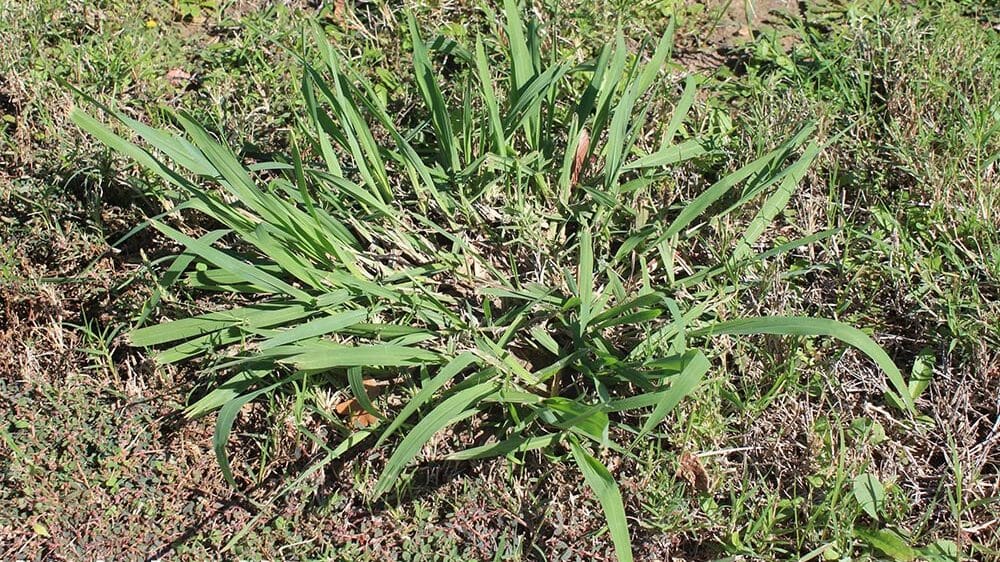
How to Get Rid of Dallisgrass
It probably seems like every time you take a look at our blog, we are talking about another threat to your beautiful lawn. However, this is not to scare you, but to educate and better prepare you when you encounter what may be inevitable. Mother nature loves to throw challenges at your landscape, which we need not remind you a healthy lawn is better suited to take on. With that being said there are a variety of grassy weeds prominent in our local area. Some easy examples include crabgrass and dallisgrass and often get confused a lot. It is the latter we will discuss today, focusing on how to get rid of dallisgrass.

What is Dallisgrass?
As we have already noted that dallisgrass is a grassy weed. It is a tufted perennial grass that was introduced into the United States from Uruguay and Argentina. The story goes a farmer, last name Dallis, brought it over to Georgia thinking it would be good for his cattle. Boy was he wrong! Dallisgrass is coarse-textured grass that grows in a clump and slowly increases in diameter as its shallow, underground stems (short rhizomes) grow outward. The rhizomes have short internodes (the length of stem between the joints) that look like concentric rings on their surface. The presence of these distinctive rhizomes is a good way to distinguish dallisgrass from other common clumping grasses in lawns, such as crabgrass. As the clump matures, the center may die and a different grass or weed may be growing in its center. Where large numbers of dallisgrass plants grow together they can form almost a solid planting with uneven texture and poor turfgrass qualities. Dallisgrass produces abundant amounts of seed, which are its primary means of dispersal. After mowing the turf, Dallis can go to seed in a matter of 3-4 days if conditions are right. Water, lawnmowers, and humans or pets spread the seed to new places. Seeds usually germinate in spring and summer when soil temperatures are in the 60° to 65°F range and grow to form new clumps. The optimum air temperature range for growth is 80° to 90°F and when temperatures are in this range, plants grow very rapidly. This weed is often found growing in wet areas such as drain ditches, low places, and heavily irrigated turfgrass. It tolerates both sandy and heavy clay soils and, once established, is drought-resistant and frost-tolerant. Dallisgrass does not become off-color in winter like many warm-season types of grass. It responds to nitrogen fertilizer and competes well against turfgrasses in fertilized sites. If left unchecked for long enough it becomes more difficult to get rid of dallisgrass. Dallisgrass can form an extensive root system that keeps the weed around for years.
Dallisgrass Prevention: Pre Emergent Control
We will get to the ways you can get rid of dallisgrass from your property, but we would rather there be less, to begin with. Pre-emergent applications can help to prevent further spread but it is not a total solution nor does it get rid of what is already existing. This can be applied in the springtime before seeds germinate. The application will create an herbicide barrier that prevents the germination process of dormant seeds that have been waiting all winter to attack. This is done in a liquid format, and typically in tandem with an organic fertilization treatment. While pre-emergent control is great, a thick healthy lawn and routine frequent mowing will better defend itself from dallisgrass, and the addition of nutrients will do nothing but strengthen your turf. Again, it is important to note that pre-emergent control is not as effective with dallisgrass as it is with broadleaf weeds or crabgrass, but it does still help. Then, add in the rest of our comprehensive annual lawn program plus good watering and mowing habits and your lawn care will be a rude awakening for weeds.
Dallisgrass Removal: Post Emergent Control
Hopefully, the use of pre-emergent herbicide helps to get rid of dallisgrass from your property, but you might not be here if it did. No worries, as your local lawn care specialist, like Higher Ground, can come out and apply a selective post-emergent herbicide treatment that kills it systematically from the inside out and takes multiple treatments. It is quite pricey due to the one control option we are given that is effective without harming your primary turf. It has to be done when the temperature is within a certain range, too hot or too cold gives little to no control. This selective herbicide will only kill off the invasive species, avoiding harm to your healthy turf except for St. Agustine being stunted however is not lethal. Another option is waiting late in the season as winter approaches and your primary turf grass goes dormant and brown. Your dallisgrass is more cold-hardy and stays active longer. Using Roundup is an effective and cheap DIY alternative but you have to make sure your main grass is dormant as roundup is non-selective meaning it kills everything. You could also individually hand pull out dallisgrass by the taproot after a good rain but this would be labor-intensive, and does not guarantee to stamp out all of the offending weeds.
Higher Ground Lawn Care and Lighting are ready to take your property to a higher level. Experience why your neighbors and businesses in University Park, TX & surrounding areas choose Higher Ground Lawn Care & Lighting to bring their property to the next level. Give us a call at (682) 206-3596 or check out our website today.
Ready to get started?


